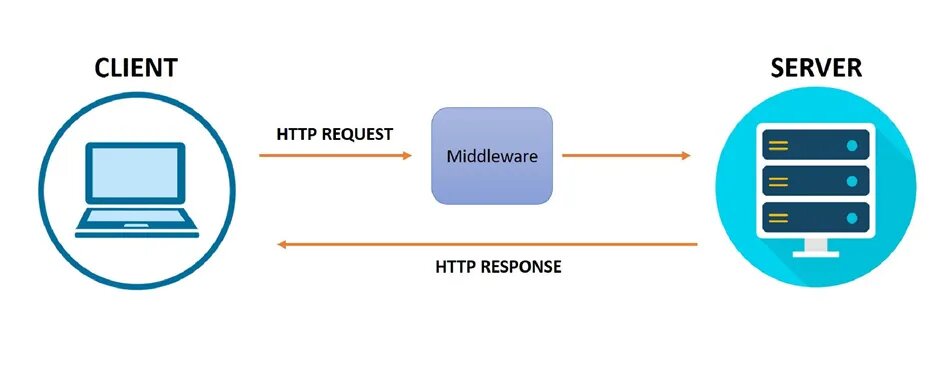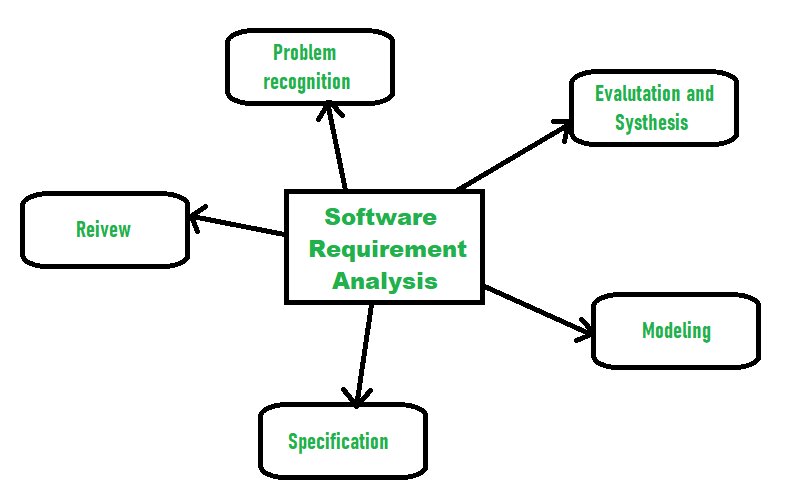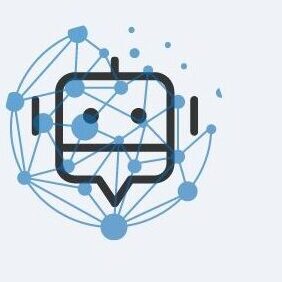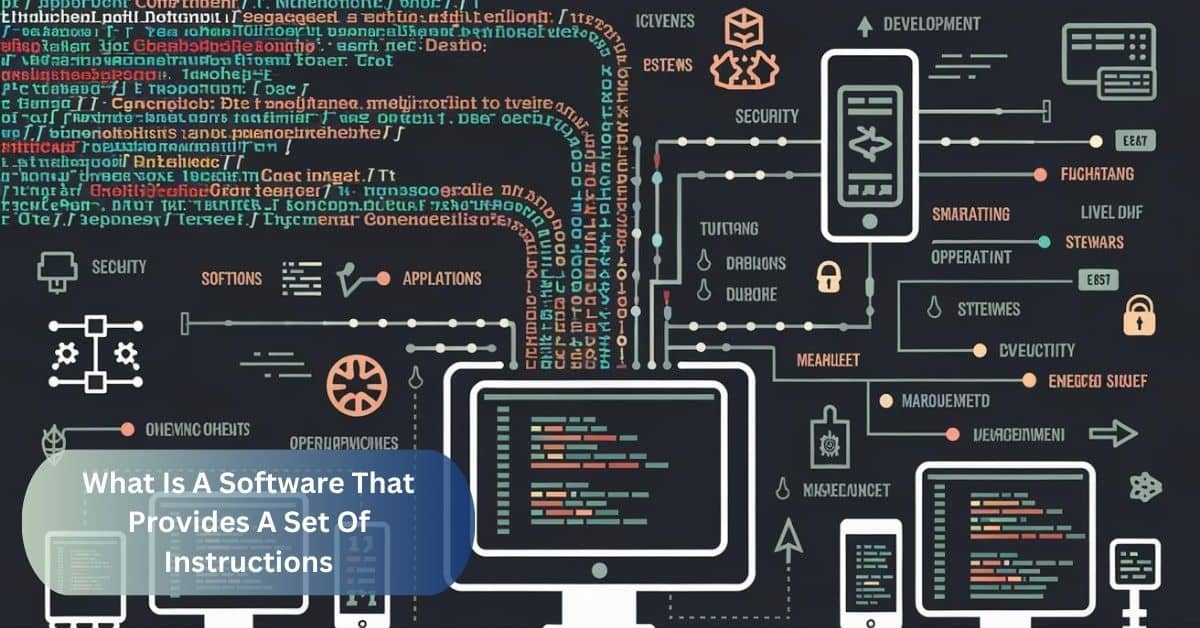In the world of technology, software plays a critical role. But have you ever wondered what software actually is? At its core, software provides a set of instructions that tells a computer or other electronic device how to perform specific tasks.
Software that provides a set of instructions is a program that tells a computer or device what tasks to perform. These instructions guide the system to complete actions, like running applications, managing hardware, or controlling devices. Examples include operating systems, applications, and embedded software.
In this article, we will dive deep into the concept of software, how it works, its various types, and the essential role it plays in modern computing.
What is Software?
Software refers to a collection of instructions, also known as code, that tell a computer how to perform tasks. Unlike hardware, which is the physical components of a computer system (such as the CPU, RAM, and hard drive), software is intangible and consists of lines of code written in programming languages.
How Does Software Work?
When you interact with a computer, you’re communicating with it through software. Here’s how it works:

- Set of Instructions: Software is essentially a set of commands that a computer follows to execute specific tasks.
- Execution by CPU: The Central Processing Unit (CPU) of your computer interprets the software’s instructions and performs the necessary calculations.
- Output: After processing the instructions, the computer provides you with a result, whether it’s displaying a webpage, running an application, or even executing a complex algorithm.
Types of Software That Provide Instructions:
1. System Software
System software manages computer hardware and provides a platform for application software to run. Operating systems like Windows, macOS, and Linux handle memory, hardware, and system resources, acting as a bridge between hardware and user applications.
2. Application Software
Application software enables users to perform specific tasks, such as writing documents, browsing the internet, or playing games. It processes user input to execute functions like saving files, rendering videos, or calculating data in spreadsheets.
3. Middleware

Middleware connects different applications, allowing them to communicate and exchange data. Examples include APIs and databases. It facilitates communication by providing instructions on how software programs should interact.
4. Programming Software
Programming software, such as IDEs and text editors, helps developers write and compile code. These tools automate coding tasks, error-checking, and project management, providing instructions for software development.
5. Embedded Software
Embedded software runs directly on specific hardware devices like smart appliances or GPS systems. It provides real-time instructions for controlling hardware, ensuring tasks are performed accurately.
The Importance of Software in Modern Life:
Software is not just something used by computer enthusiasts or IT professionals. It touches almost every aspect of modern life.
1. Enhancing Productivity

From writing reports and analyzing data to communicating across the globe, software enhances our productivity in countless ways. Without it, modern businesses would struggle to operate efficiently.
2. Driving Innovation
Software is at the heart of technological innovation. From artificial intelligence (AI) to blockchain, it’s software that powers the latest advancements in science, finance, healthcare, and more.
3. Entertainment and Leisure
Whether you’re streaming your favorite TV shows, playing video games, or interacting on social media, software enables all of these activities. It’s transformed how we entertain ourselves and stay connected.
How Software is Developed?
Developing software is a complex process that involves several stages. These stages ensure that the software meets the users’ needs and functions efficiently.
1. Requirement Analysis

Before writing a single line of code, developers need to understand what the software is supposed to do. This stage involves collecting and analyzing requirements from stakeholders to ensure the project is aligned with its goals.
2. Design
The design phase focuses on creating the architecture of the software, outlining its structure, features, and user interfaces.
3. Implementation (Coding)
Once the design is finalized, developers start coding the software. They use programming languages like Python, Java, or C++ to write the set of instructions that will bring the software to life.
4. Testing
Before software is released, it must be thoroughly tested to identify bugs and issues. Testing can be automated or manual and ensures that the software functions as expected.
5. Deployment and Maintenance
Once the software passes the testing phase, it is deployed to users. After deployment, it requires ongoing maintenance to fix bugs, add features, and improve performance.
Software Security: Why It Matters

In today’s digital age, security is a major concern for software developers and users alike. Insecure software can expose individuals and businesses to cyber threats like data breaches, malware, and ransomware.
1. Best Practices for Software Security
- Regular Updates: Developers should frequently update software to fix vulnerabilities and add new security features.
- Encryption: Sensitive data should be encrypted to protect it from unauthorized access.
- User Authentication: Strong authentication measures, such as multi-factor authentication, help secure software from unauthorized access.
FAQ’s
1. What is software?
Software is a set of instructions that tells a computer how to perform specific tasks. It can range from operating systems to applications and even programs that control hardware.
2. How does software work?
Software provides a series of instructions to a computer’s CPU, which processes them to execute specific functions, whether it’s running a program or displaying a webpage.
3. Why is software important?
Software is essential for the functioning of computers and electronic devices. It enhances productivity, drives innovation, and supports a wide range of industries from healthcare to entertainment.
4. How is software developed?
Software development involves several stages, including requirement analysis, design, coding, testing, and maintenance. Each step ensures the software meets its intended goals and performs well.
5. What is the role of software in cybersecurity?
Software plays a crucial role in cybersecurity by protecting systems and data from threats. This includes regular updates, encryption, and user authentication measures.
6. Can software be used across different devices?
Yes, some software is cross-platform and can be used on multiple devices, including computers, smartphones, and tablets. Examples include web browsers and cloud-based applications.
7. What are the challenges in software development?
Challenges in software development include meeting user expectations, ensuring security, handling bugs and errors, and keeping up with technological advancements.
8. What is the future of software?
The future of software is exciting, with advancements in AI, machine learning, quantum computing, and IoT expected to revolutionize industries and personal computing.
9. How can users ensure their software is secure?
Users should ensure their software is up to date, use strong passwords and authentication methods, and be cautious of downloading software from unverified sources.
Conclusion:
Software has evolved rapidly over the past few decades, and its future is filled with exciting possibilities. As technologies like AI, quantum computing, and the Internet of Things (IoT) continue to develop, software will play an increasingly critical role in shaping our world.

